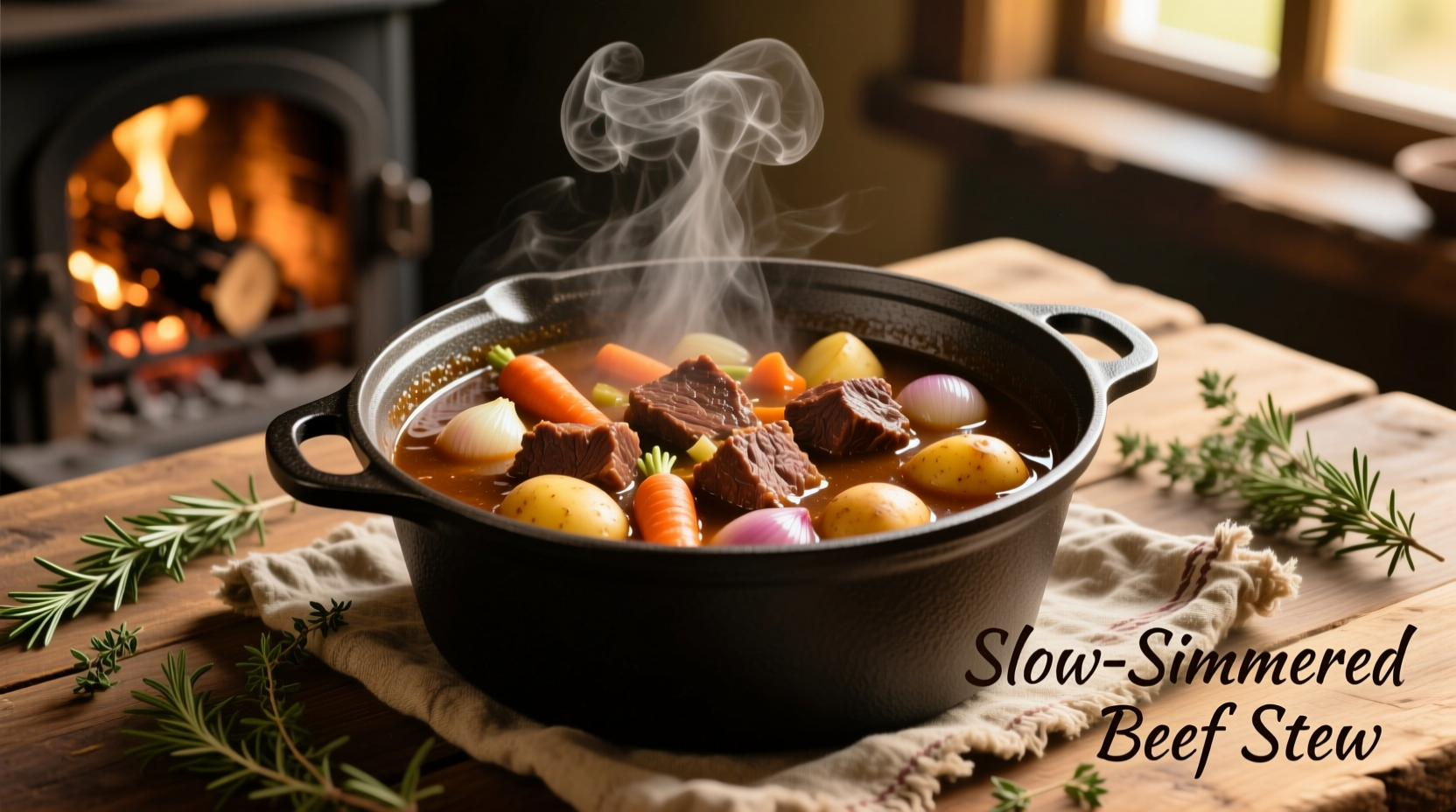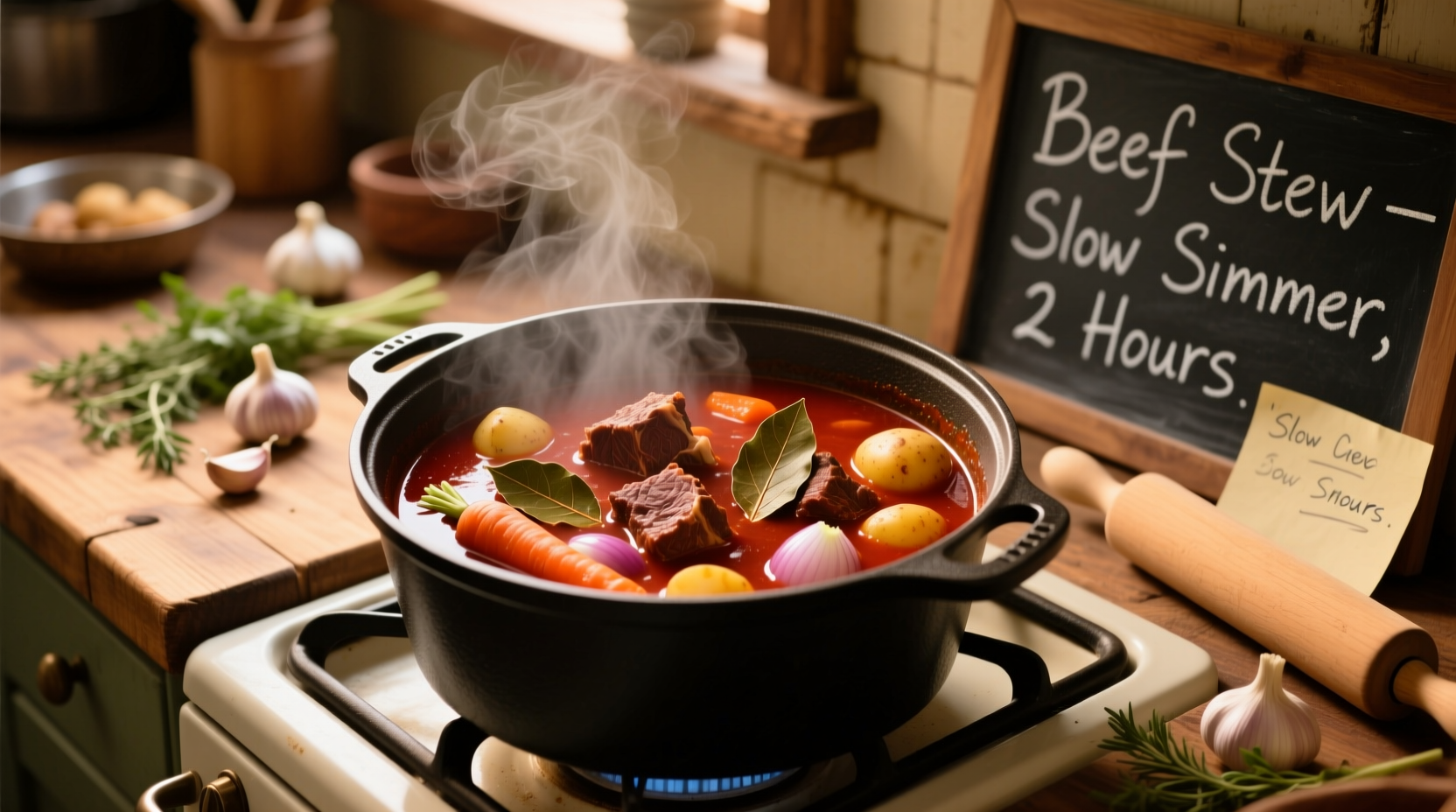Transform your tough cuts of beef into melt-in-your-mouth masterpieces with these proven stew meat techniques trusted by professional chefs. Whether you're working with chuck, round, or brisket, the right cooking method unlocks incredible depth of flavor while tenderizing even the toughest cuts. Discover how to maximize your stew meat's potential with time-tested approaches that guarantee restaurant-quality results in your home kitchen.
Why Stew Meat Needs Special Cooking Techniques
Stew meat typically comes from well-exercised muscle groups like chuck, round, or shank that contain abundant collagen and connective tissue. According to the USDA Food Safety and Inspection Service, these tougher cuts require moist-heat cooking methods to break down collagen into gelatin, which creates that signature tender texture. Rushing the process results in chewy, disappointing meat—patience is essential for transforming these economical cuts into culinary treasures.

Mastering the Classic Beef Stew
While seemingly simple, perfect beef stew requires precise technique. Professional chefs recommend these critical steps:
- Proper browning: Sear meat in batches at 350°F to develop complex Maillard reactions without steaming
- Layered flavor building: Cook aromatics (onions, carrots, celery) until deeply caramelized before adding liquids
- Acid balance: Add 2 tablespoons tomato paste or ¼ cup red wine to cut richness and enhance flavor development
- Temperature control: Maintain a gentle simmer (180-200°F), never a rolling boil, to prevent meat from becoming tough
Time-Saving Pressure Cooker Method
Modern electric pressure cookers deliver traditional stew results in a fraction of the time. For optimal results:
- Cut meat into uniform 1½-inch cubes for even cooking
- Use natural pressure release for 15 minutes to prevent meat fibers from seizing
- Add delicate vegetables (peas, mushrooms) after cooking to maintain texture
- Thicken sauce by mixing 2 tablespoons cornstarch with equal parts cold water
| Cooking Method | Time Required | Texture Result | Best For |
|---|---|---|---|
| Traditional Braise | 2-3 hours | Fork-tender, rich gravy | Weekend cooking, special occasions |
| Pressure Cooker | 45-60 minutes | Exceptionally tender, slightly less complex flavor | Weeknight dinners, time-pressed cooks |
| Slow Cooker | 6-8 hours | Melts-in-mouth, hands-off convenience | Busy schedules, meal prep |
Global Flavor Variations That Shine with Stew Meat
Stew meat's versatility shines across world cuisines. These authentic preparations maximize flavor while tenderizing tough cuts:
Japanese Nikujaga (Meat and Potato Stew)
This comforting home-style dish balances sweet and savory with a dashi-based broth. Key technique: Add potatoes halfway through cooking to prevent disintegration. The Japanese Ministry of Agriculture notes this dish traditionally uses thinly sliced beef but works beautifully with cubed stew meat when cooked low and slow.
Moroccan Lamb Tagine
While traditionally made with lamb, stew meat creates an equally delicious version. The magic happens through slow cooking with preserved lemons, olives, and warm spices like cumin and cinnamon. Professional chefs recommend adding honey during the last 30 minutes to prevent burning.
Korean Bossam (Boiled Meat)
This surprisingly simple preparation yields incredibly tender meat through gentle boiling with aromatics. The key is maintaining water temperature just below simmering (180°F). Serve with kimchi and ssamjang for an authentic experience that transforms inexpensive cuts into something extraordinary.
Budget-Friendly Stew Meat Transformations
Maximize your grocery budget with these economical approaches:
- Stretch with beans: Add cannellini or butter beans during the last hour of cooking for added protein and texture
- Vegetable boost: Incorporate less expensive root vegetables like parsnips or turnips that hold up well to long cooking
- Leftover magic: Transform leftovers into shepherd's pie by topping with mashed potatoes and baking until golden
- Freezer friendly: Portion cooled stew into freezer bags (lay flat for space efficiency) for up to 3 months
Avoiding Common Stew Meat Mistakes
Even experienced cooks make these critical errors that compromise results:
- Overcrowding the pot: Causes steaming instead of browning—sear in batches for proper caramelization
- Adding cold liquid to hot meat: Causes temperature shock that toughens meat fibers—use room temperature stock
- Skimping on acid: A splash of vinegar or wine balances richness and enhances flavor development
- Underseasoning: Tough cuts require more seasoning than tender steaks—season in layers throughout cooking
When to Choose Alternative Cooking Methods
While braising works for most stew meat, certain situations call for different approaches:
- Time constraints: Pressure cooker delivers tender results in under an hour
- Hot weather: Use an oven-safe dish in a 275°F oven to avoid heating your kitchen
- Texture preferences: For shredded texture, cook until meat easily pulls apart with forks
- Flavor intensity: For deeper flavor, brown meat well and deglaze pan thoroughly with wine or stock











 浙公网安备
33010002000092号
浙公网安备
33010002000092号 浙B2-20120091-4
浙B2-20120091-4